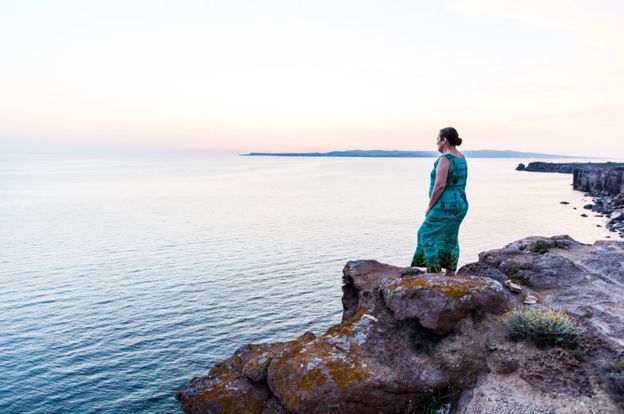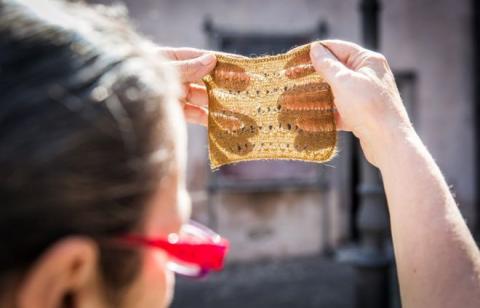
Silk is usually made from the cocoons spun by silkworms - but there is another, much rarer, cloth known as sea silk or byssus, which comes from a mussel. Chiara Vigo is thought to be the only person left who can harvest it, spin it and make it shine like gold.
Villagers stare as I knock on the door of Chiara Vigo's studio, otherwise known as the Museum of Byssus, on the Sardinian island of Sant'Antioco. One sign on the door says: "Haste doesn't live here." Another adds: "In this room nothing is for sale."
Vigo is sitting i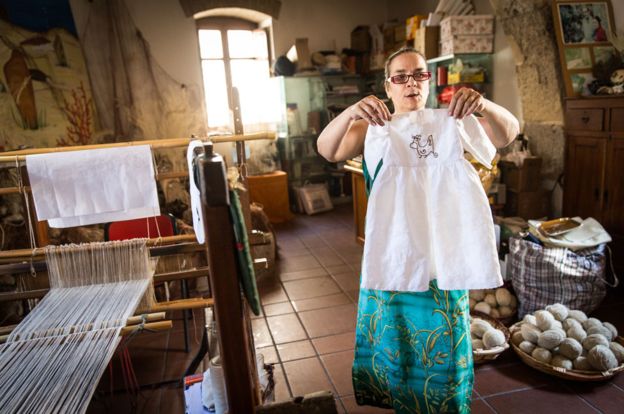 n a far corner of the room surrounded by yarns and canvasses, holding hands with a young woman whose eyes are full of tears. She caresses her and braids a bracelet while staring intensely at the girl.
n a far corner of the room surrounded by yarns and canvasses, holding hands with a young woman whose eyes are full of tears. She caresses her and braids a bracelet while staring intensely at the girl.
Then she hums a song with her eyes closed and fixes the bracelet on the girl's wrist. She reaches for the window and opens the shades to let the sunlight in and instantly the dark brown bracelet starts to gleam. The girl is flabbergasted but this is no magic.
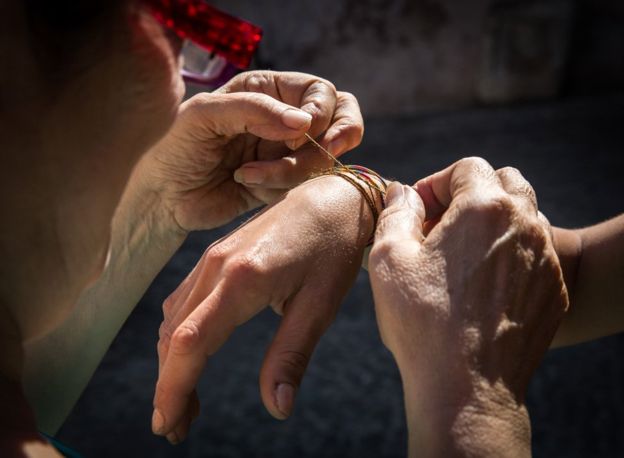
The bracelet is made of an ancient thread, known as byssus, which is mentioned on the Rosetta stone and said to have been found in the tombs of pharaohs.
Some believe it was the cloth God told Moses to lay on the first altar. It was the finest fabric known to ancient Egypt, Greece and Rome, and one of its remarkable properties is the way it shines when exposed to the sun, once it has been treated with lemon juice and spices.
Another is that it is extraordinarily light. Chiara Vigo asked me to close my eyes and extend my hand. I knew what she was going to do, but still I could not tell when a small square of the cloth touched my skin.
The raw material comes from the glistening aquamarine waters that surround the island. Every spring Vigo goes diving to cut the solidified saliva of a large mussel, known in Latin as Pinna nobilis.
She does it early in the morning, to avoid attracting too much attention, and is accompanied by members of the Italian coastguard - this is a protected species. It takes 300 or 400 dives to gather 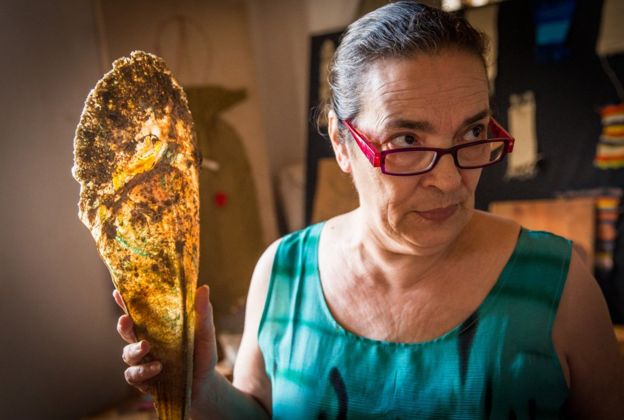 200g of material.
200g of material.
Then she starts weaving it, but as the sign on the door says, it is not for sale.
"It would be like commercialising the flight of an eagle," Vigo says.
"The byssus is the soul of the sea. It is sacred."
She gives the fabric to people who come to her for help. It may be a couple who have decided to marry or who have married, a woman who wants a child, or one who has recently become pregnant. Byssus is believed to bring good fortune and fertility.
To read more about this fascinating woman and her art click Byssus or Last Weaver.
